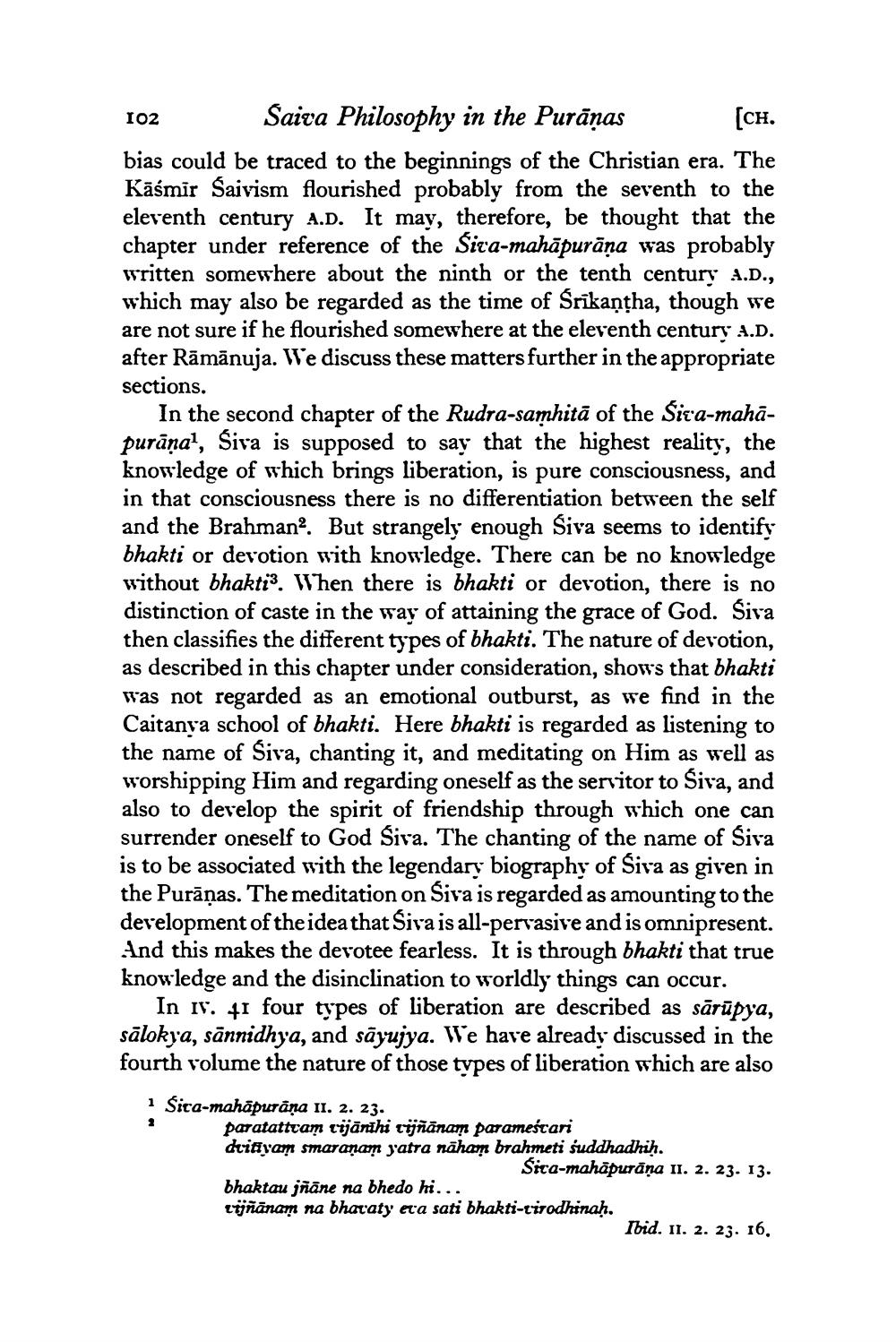________________
102 Saiva Philosophy in the Purānas [CH. bias could be traced to the beginnings of the Christian era. The Kāśmir Saivism flourished probably from the seventh to the eleventh century A.D. It may, therefore, be thought that the chapter under reference of the Sira-mahāpurāna was probably written somewhere about the ninth or the tenth century A.D., which may also be regarded as the time of Srikantha, though we are not sure if he flourished somewhere at the eleventh century A.D. after Rāmānuja. We discuss these matters further in the appropriate sections.
In the second chapter of the Rudra-samhitā of the Sica-mahāpurāna', Siva is supposed to say that the highest reality, the knowledge of which brings liberation, is pure consciousness, and in that consciousness there is no differentiation between the self and the Brahman? But strangely enough Siva seems to identify bhakti or devotion with knowledge. There can be no knowledge without bhakti?. When there is bhakti or devotion, there is no distinction of caste in the way of attaining the grace of God. Siva then classifies the different types of bhakti. The nature of devotion, as described in this chapter under consideration, shows that bhakti was not regarded as an emotional outburst, as we find in the Caitanya school of bhakti. Here bhakti is regarded as listening to the name of Siva, chanting it, and meditating on Him as well as worshipping Him and regarding oneself as the servitor to Siva, and also to develop the spirit of friendship through which one can surrender oneself to God Siva. The chanting of the name of Siva is to be associated with the legendary biography of Siva as given in the Purāņas. The meditation on Siva is regarded as amounting to the development of the idea that Siva is all-pervasive and is omnipresent. And this makes the devotee fearless. It is through bhakti that true knowledge and the disinclination to worldly things can occur.
In IV. 41 four types of liberation are described as sārūpya, sälokya, sānnidhya, and sāyujya. We have already discussed in the fourth volume the nature of those types of liberation which are also
i Sica-mahāpuräna II. 2. 23.
paratattvam cijānhi cijñānam paramestari dvitvam smaranam yatra nāham brahmeti suddhadhih.
Sira-mahāpurāņa II. 2. 23. 13. bhaktau jñāne na bhedo hi... rijñānam na bharaty era sati bhakti-tirodhinah.
Ibid. 11. 2. 23. 16.




